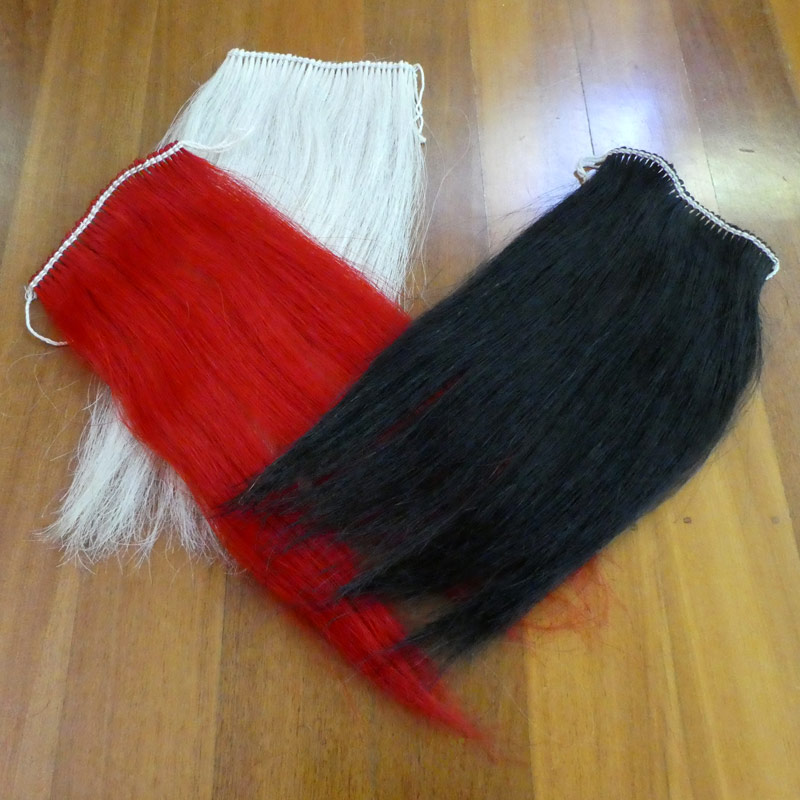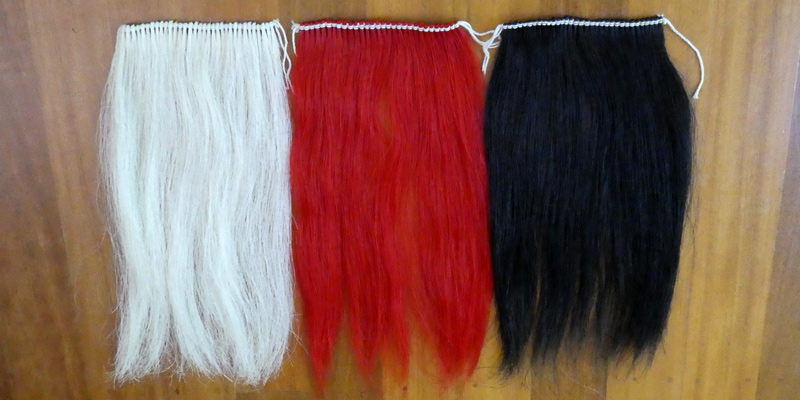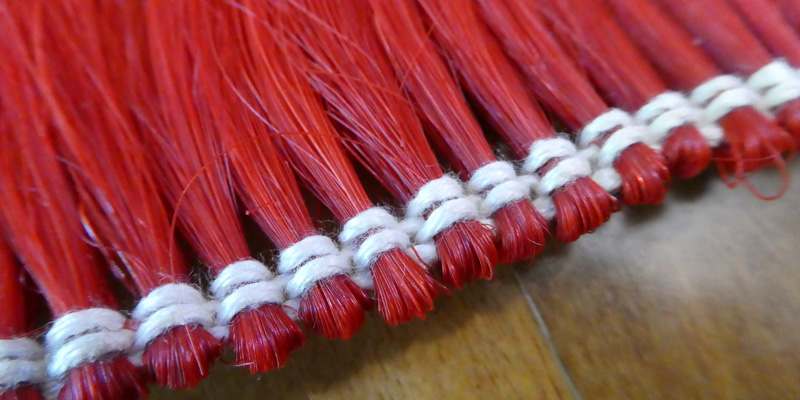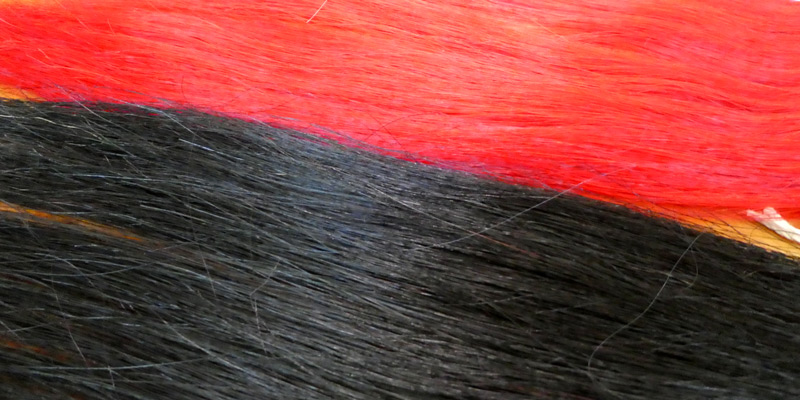Wushu Spear/Weapon Luxury HorseHair Tassel (Qiang Ying)
| Qty: | Add to cart |
- Made from genuine Horsehair
- Hair is 35cm in length, but can be trimmed as desired
- 13cm approx. width for perfect attachment to weapons
- Thick and dramatic appearance
- Each tassel made by hand
- Won’t mat, tangle or knot like acrylic tassels
- Extremely durable
- Suitable for spear and other long weapons
- Available in Red, White or Black
More About Spear Tassels (Qiāng Yīng)
There has been much written about the history of spear tassels but we really don’t know the exact provenance of them.
To provide some suppositions and explanations for further discussion:
1. Status of the User
The tassel was used to define the elite status of the user, being granted only to elite troops within the army. Furthermore, it created a sense of pride in the user. To see such a beautiful and regal symbol at the top of your weapon gave you pride and courage
2. Tactical Purposes
With the spear being moved quickly, the tassel helped to blur the vision of the opponent so it would be more difficult for them to grab the shaft of the spear. In addition, if opponents were presented with a sea of tasselled weapons it was far more intimidating than “a whole lot of sticks in the distance”.
3. Keeping the Spear Shaft Clean
In combat, the tassel would impede the blood from the blade moving down the shaft of the spear. Obviously if the spear shaft became slippery or sticky, the user would be unable to use the weapon effectively.
4. Reinforcing the Top of the Spear Shaft
Traditionally the tassel was bound to the top of the spear shaft just below the spear tip, which helped to prevent the shaft from splitting during repeated use.
5. Prevent Complete Penetration of the Spear
The tassel was used at times to bind a rod or crosspiece to the top of the spear to prevent the spear penetrating too deeply into the opponent. Obviously, if the spear completely pierced the opponent it couldn’t be retrieved, resulting in the user being un-armed.
6. Protection of the Spear Shaft during Inclement Weather
The attachment of the spear tassel is just above the junction between the spear head and the shaft. If the spear is transported vertically, the tassel then prevents rain from entering the end of the shaft and weakening it.
How to Attach a Spear Head and Tassel to a Cudgel
Attaching the Spear Head
1. Ensure that the end of the cudgel is shaved sufficiently to accommodate the spear head. You want to make sure the spear head shaft is at least 3cm down the cudgel.
2. Fit the spear head onto the cudgel then strike the butt end of the cudgel on the ground several times to ensure the spear head is securely in place.
3. Using a power or hand-held drill, drill a hole into the cudgel through the base hole of the spear. Don’t drill in too far. If you are using self-tapping screws, you may be able to eliminate this step but it is still recommended that you create a pilot hole to reduce the pressure on the cudgel timber.
4. Affix the spear head to the cudgel with a screw (usually supplied). If the screw is not supplied, make sure it’s not too long.
5. Test the fixing to ensure the spearhead can’t fly off.
Attaching the Spear Tassel
6. If you look at the hair (tassel) it will have a front and back side (the front is neatly woven, whereas the back side you can see the “overlocked” stitching.
Place the hair just below the spear head with the hair toward the tip of the spear head and the woven section just below the spear head. It should be placed so that the front side of the hair is inward.
7. Tie the hair onto the shaft of the spear, just below the spear head using the string attached to the hair.
8. You have two options now:
a) Tie the hair firmly to the shaft of the spear with another piece of string located just above the stitch line of the hair piece; or
b) Secure the hair to the shaft with fabric tape. This is the most common, simple and secure way of affixing the hair to the shaft. The best fabric tape to use is surgical bandaging tape. It has good grip even if it gets moist, is flexible and provides a good, bond to the hair, fabric and wood without causing permanent damage.
No matter which method you choose, try and keep the fixing as neat as possible.
9. Now fold the hair down over the fixings toward the shaft of the spear. It’s a good idea to either tie the hair to the shaft just below the fixings so it settles in place, or you can just put a rubberband around it. Either way, it will help to “bend” the hair down and get it settled so it is folded down toward the shaft. Some people also like to lightly spritz the hair with water and let it dry to also encourage it to settle in its new position.
10. Some people leave the 3rd string or rubberband there as they feel it looks better but that’s somewhat subjective and up to personal preference.
However, if you want your spear hair to continue looking good it’s not a bad idea to tie it or put the rubber band around it after you’ve finished training, especially if you are putting it into a travel bag.





